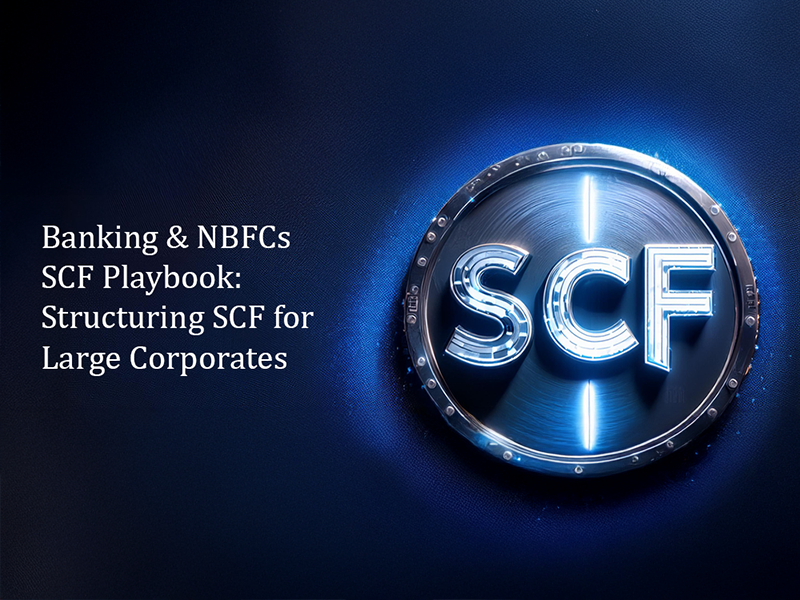Lessons of Supply Chain Finance: Transparency
Ah, transparency—the finance world’s version of eating your vegetables. Everyone knows it’s important, but too many still try to survive on a diet of complex structures, vague disclosures, and “don’t worry, we’ve got this” statements.
Unfortunately, in Supply Chain Finance (SCF), a lack of transparency isn’t just an inconvenience—it’s a full-blown financial hazard. The moment companies start getting creative with their disclosures, you can bet trouble isn’t far behind (just ask Greensill, or better yet, their investors).
So, what exactly does transparency mean in SCF, why do companies struggle with it, and how can businesses make sure they’re on the right side of history (and regulation)? Let’s break it down.
When we say SCF needs transparency, we’re talking about clarity at every level:
✔️ For Buyers & Suppliers – Clear, fair terms that don’t suddenly change overnight or lock businesses into debt traps disguised as early payment solutions.
✔️ For Investors & Funders – No shady off-balance-sheet gymnastics that hide risks under complex legal jargon. If your SCF program needs a Rosetta Stone and a team of forensic accountants to understand, you’re doing it wrong.
✔️ For Regulators & Market Participants – Simple, accurate reporting on who’s financing what, and how companies are using SCF to manage their working capital.
In short: If your SCF program needs a 50-page footnote in the annual report, it’s probably not transparent enough.
1. They Confuse SCF with “Magic Money”
Some companies treat SCF like free money, using it to stretch payment terms indefinitely without considering the risks. When these obligations aren’t properly disclosed, it creates a ticking time bomb—one that can explode on financial statements when least expected.
2. They Overcomplicate the Structure
If your SCF program looks like it was designed by a hedge fund with a PhD in complexity, there’s a problem. The more complicated the structure, the harder it is for investors, suppliers, and even internal teams to understand what’s actually happening.
3. They Hide Risk in Plain Sight
Some companies bury SCF liabilities deep in their reports, reclassifying them as trade payables instead of debt. It makes financials look better—until auditors, rating agencies, or investors start asking questions.
Spoiler alert: They always do.
Let’s take a real-world example of what happens when transparency in SCF goes out the window.
🔴 Company A uses SCF to extend supplier payments from 60 to 180 days. On paper, everything looks great—cash flow improves, the balance sheet stays clean, and everyone gets paid (eventually).
🔴 But behind the scenes, the company is struggling. They’re using SCF as a crutch rather than a tool, and instead of managing liquidity responsibly, they’re kicking the financial can down the road.
🔴 When a major funder pulls out (maybe due to market volatility, a credit downgrade, or a general loss of confidence), the whole house of cards collapses overnight. Suddenly, a healthy-looking business is scrambling for emergency financing.
This is exactly what happened to Carillion in the UK, where hidden SCF liabilities played a major role in one of the biggest corporate failures in British history.
Moral of the story: Transparency isn’t just about being honest—it’s about survival.
🔍 1. Make SCF Reporting Crystal Clear
- Ensure SCF obligations aren’t misclassified as trade payables when they function as debt.
- Disclose SCF arrangements properly in financial statements—no burying the details in the appendix.
📜 2. Keep Agreements Simple and Fair
- Payment terms should be clear and reasonable for all parties.
- No hidden clauses that penalize suppliers unfairly if funders decide to pull out.
🛑 3. Don’t Use SCF as a Band-Aid for Liquidity Issues
- If a company relies too heavily on SCF just to maintain cash flow, it’s time to re-evaluate the business model.
- SCF should be an enhancement, not a last resort.
📊 4. Educate Investors, Suppliers, and Internal Teams
- If key stakeholders don’t understand the SCF structure, something’s wrong.
- Make transparency a priority in contracts, reporting, and investor communications.
The best SCF programs aren’t just efficient and profitable—they’re trusted.
Transparency isn’t a regulatory burden or a nice-to-have—it’s the foundation of a healthy SCF ecosystem. The moment businesses start hiding, misclassifying, or overcomplicating SCF, they create risk not just for themselves, but for their entire supply chain and funding partners.
So, let’s ,strong>ditch the smoke and mirrors. SCF works best when it’s straightforward, honest, and easy to understand. Because at the end of the day, nothing kills confidence (and businesses) faster than a lack of transparency.



